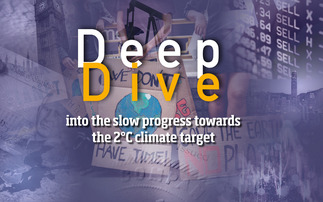Agricultural techniques have changed dramatically over the past 50 years, particularly in more developed nations.
More efficient farm machinery, genetic modification of seeds and the use of fertilisers and agrochemicals have all helped to increase crop yields significantly.
However, while the industrialisation of farming has brought a multitude of benefits, it is also contributing to an array of unintended negative consequences, particularly for the environment.
Exclusionary ESG: 'The tree that fell in the forest that no one heard'
The Stockholm Resilience Centre has identified nine planetary boundaries which humanity should not breach if we are to maintain a safe operating space for society.
Modern agriculture practices contribute negatively to eight of the nine boundaries, including biodiversity loss, climate change, fresh water use, land system change and nitrogen and phosphorus flows to the biosphere and oceans.
In most of these areas, we are already in breach of safe limits. Agricultural emissions alone account for nearly a quarter (23%) of the world's greenhouse gas emissions, and if the entire food chain is included, estimates stretch to as high as 37%.
The need to embrace the shift to more sustainable agriculture techniques is evident, and through engagement with each level of the supply chain, investors can accelerate that shift.
The transition presents several investment opportunities, with Bank of America estimating that the 'future food solutions' market, which is worth over $200bn currently, is set to grow at an 8.6% CAGR to 2025.
Understanding the challenge at hand
A range of factors contribute to the scale of agricultural emissions. Cattle and dairy cows emit enough greenhouse gasses to put them on par with the highest-emitting nations, while agricultural expansion and large-scale commercial agricultural production are significant contributors to global deforestation.
Lastly, the overuse of chemical fertiliser adds to water pollution and soil degradation.
There are also unavoidable pressures - global populations are set to rise to almost 10 billion by 2050, meaning agricultural demand could grow by 40%, while demand for meat products in emerging markets could rise by 76% by 2050, according to the United Nations.
The IA's Cummings: Investment managers must meet consumer demand for responsible funds
There is also a severe imbalance in the production and distribution of food globally, with 80% of countries today not producing enough food to feed themselves.
At the same time, 50% of the population is either overweight or undernourished (39% overweight, 11% undernourished), while one third of all of the food that is grown globally goes to waste.
Sustainable agriculture needs a makeover
One way of creating a more sustainable agricultural system is to increase the use of more holistic regenerative farming techniques to rebuild soil quality and, in the process, help to sequester carbon.
There is evidence to suggest yields from this type of agriculture can be higher than conventional agriculture, while at the same time helping to prevent soil erosion, re-mineralising the soil, protecting groundwater and reducing damaging pesticide and fertiliser runoff.












